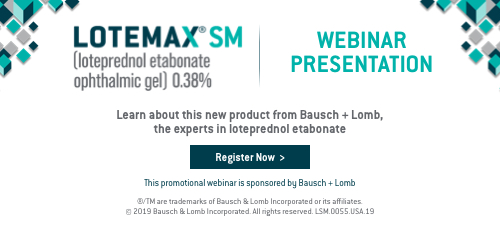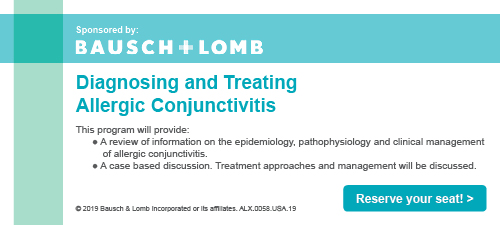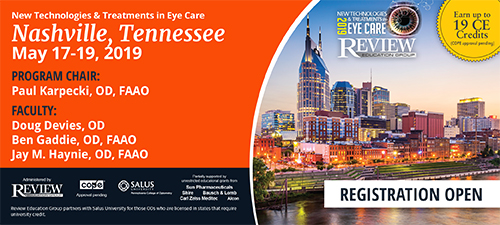
A
weekly e-journal by Art Epstein, OD, FAAO
Off the Cuff: Hubble is Finally in Trouble
By now many of you are aware that the FTC has been weighing proposed changes to the Contact Lens Rule. On Thursday, after extensive hearings, testimony and wading through thousands of public comments, the agency announced proposed supplemental rules. The good news is that it’s not all bad news – at least not from my first read. To the credit of our professional organizations, industry and so many of you that took the time to contact the FTC, the Commission proposes to address the increasing frequency of incomplete or incomprehensible automated telephone verification messages with several new requirements for sellers. Included are requirements that the verification requests be delivered in a slow and deliberate manner and at a reasonably understandable volume, and that prescribers are able to repeat the message. Most importantly, the FTC clearly recognizes our role in protecting the health of our patients, stating “the purpose of these proposals is to enable prescribers to fulfill their role as protectors of patients’ eye health by ensuring they can comprehend sellers’ verification requests.” This will be a major victory for patient well-being and a stake through the heart of Hubble and other less-than-ethical vendors who substitute no-name or obsolete lenses by gaming the passive verification system with unintelligible requests. The FTC also proposes strengthening the prohibition on seller alteration of prescriptions by specifying that the alteration includes a seller providing the prescriber with a verification request with the name of a manufacturer or brand other than that specified by the patient’s prescriber, unless such name is specifically provided by the patient. Essentially, this would prevent online sellers from selling whatever they wanted (or was most profitable) regardless of what the doctor prescribed by leveraging passive verification. The one problem here is that, apparently, the FTC will allow the patient to change their own prescription. In the real world, that means that the 1-800 or other vendors will “encourage” the patient to change their own Rx to better suit the vendor’s needs. Given the veritable explosion of new technology incorporated in modern lenses and materials, allowing the patient to make substitutions without professional guidance is problematic at best.The text of the supplemental proposal can be found here. The entire document is nearly 150 pages long so it will take time to digest it in its entirety. Stand by for more on this important issue and your opportunity to provide your comments to the FTC. Apparently, they are listening.
|
|||||
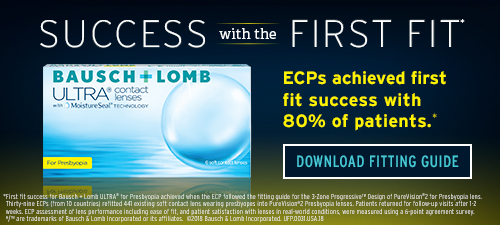 |
||
| Diurnal Change of Retinal Vessel Density and Mean Ocular Perfusion Pressure in Patients with Open-angle Glaucoma | ||||
This study investigated in primary open-angle glaucoma (POAG) and healthy subjects the pattern and magnitude of diurnal variation in optical coherence tomography angiography (OCTA) retinal vessel density (RVD). A prospective study was conducted on 20 POAG patients and 19 healthy subjects. Peripapillary/macular RVD (using swept-source OCTA), intraocular pressure (IOP) and systemic blood pressure (BP) were measured five times a day (8am, 11am, 2pm, 5pm and 8pm). The magnitudes and patterns of diurnal changes in RVD, diastolic BP and mean ocular-perfusion pressure (MOPP) were analyzed and compared between the POAG patients and the healthy subjects.
Intra-visit repeatability (0.755 to 0.943) and inter-visit reproducibility (0.843 to 0.986) for the RVD measurements showed excellent reliability. In the POAG patients, the magnitude of diurnal change in peripapillary RVD (9.71% ± 7.04%) and macular RVD (7.22% ± 4.73%) were significantly greater than that in the healthy group (5.73% ± 3.85% and 5.51% ± 3.45%, respectively). The magnitudes of diurnal variations of IOP and MOPP in the POAG group likewise were greater than those in the healthy group. As for the patterns of diurnal RVD change, interestingly, at 8 pm, the macular RVD of the healthy group increased to the highest level (44.12% ± 2.95%) while that of the POAG group decreased to the lowest level (40.41% ± 2.54%). In POAG eyes, diurnal change of IOP, MOPP and RVD was significantly greater than in the healthy eyes. These findings suggested that diurnal RVD changes might reflect the hemodynamic variation of POAG. |
||||
SOURCE: Baek SU, Kim YK, Ha A, et al. Diurnal change of retinal vessel density and mean ocular perfusion pressure in patients with open-angle glaucoma. PLoS One. 2019;14(4):e0215684. |
||||
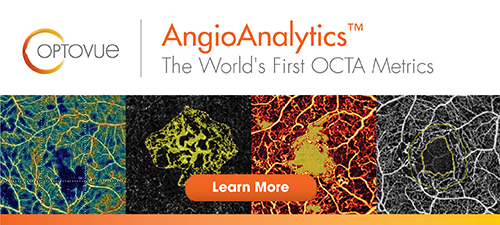 |
||
| Impact of Various Types Of Near Work and Time Spent Outdoors at Different Times of Day on Visual Acuity and Refractive Error Among Chinese School-going Children | ||||
Various types of near work have been suggested to promote the incidence and progression of myopia, while outdoor activity appears to prevent or retard myopia. However, there is a lack of consensus on how to interpret these results and translate them into effective intervention strategies. This study examined the association between visual acuity and time allocated to various activities among school-going children. A population-based survey of 19,934 students in grade four and five from 252 randomly selected rural primary schools in Northwest China in September 2012 was employed. This survey measured visual acuity and collected self-reported data on time spent outdoors and time spent doing various types of near activities.
Prolonged (>60minutes/day) computer usage and smartphone usage were significantly associated with greater refractive error, while television viewing and after-school study were not. For time spent outdoors, only time around midday was significantly associated with better uncorrected visual acuity. Compared to children who reported no midday time outdoors, those who spent time outdoors at midday for 31 to 60 minutes, or more than 60 minutes had better uncorrected visual acuity by 0.016 LogMAR units and 0.016 units, respectively. Use of smartphones and computers were associated with declines in children's vision, while television viewing was not. Researchers wrote that statistically significant associations between outdoor time at midday and reduced myopia may support the hypothesis that light intensity plays a role in the protective effects of outdoor time. |
||||
SOURCE: Guan H, Yu NN, Wang H, et al. Impact of various types of near work and time spent outdoors at different times of day on visual acuity and refractive error among Chinese school-going children. PLoS One. 2019;14(4):e0215827. |
||||
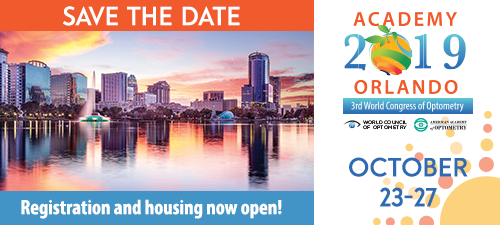 |
||
| Changes in the Anterior Lamina Cribrosa Morphology with Glaucoma Severity | ||||
This study was designed to evaluate if primary open-angle glaucoma (POAG) and its severity were associated with the shape of the lamina cribrosa (LC), as measured by a global shape index (LC-GSI), or other indices of LC curvature or depth. Optical coherence tomography (OCT) scans of the optic nerve head (OHN) were obtained from subjects with POAG (n=99) and non-glaucomatous controls (n=76). ONH structures were delineated, the anterior LC morphology reconstructed in 3D, and the LC-GSI calculated (more negative values denoted greater posterior concavity). Anterior LC depth and 2D-curvature were also measured. Severity of glaucoma was defined by the extent of visual field loss, based on the Hodapp-Parrish-Anderson grading. Linear regression analyses compared LC characteristics between controls, mild-moderate and advanced POAG groups. After adjusting for age, gender, ethnicity, intraocular pressure, axial length and corneal curvature, the LC-GSI was most negative in the advanced POAG group, followed by the mild-moderate POAG group and then controls. There was also a significant trend of increasing LC depth and greater LC horizontal curvature with increasing severity of glaucoma. Therefore, with more severe glaucoma, the LC-GSI was increasingly more negative, and the anterior LC depth and curvature greater. These observations collectively corresponded to greater cupping of the ONH at the level of the LC. Investigators wrote that, as the LC-GSI helped reveal the 3D anterior LC morphology, its potential usage might be complementary to existing ONH parameters measured on OCT. |
||||
SOURCE: Tan NYQ, Tham YC, Thakku SG, et al. Changes in the anterior lamina cribrosa morphology with glaucoma severity. Sci Rep. 2019;9(1):6612. |
||||
| News & Notes | ||||||||
| Academy 2019 Orlando and 3rd World Congress of Optometry Calls for Abstracts The Scientific Program Committee invited the submission of abstracts for Academy 2019 Orlando and 3rd World Congress of Optometry (Oct. 23-27). The abstract submission window will be open from May 1 through May 31. This year, the Scientific Program Committee will organize multiple focused paper and poster sessions on special topics that will offer attendees an opportunity to engage in lively discussions and debates. Read more. |
||||||||
| ImprimisRx to Introduce New Formulations at ASCRS Meeting ImprimisRx announced its participation at the American Society of Cataract and Refractive Surgery annual meeting in San Diego (May 3 to 7). At the conference, attendees will have the opportunity to meet with ImprimisRx representatives at Exhibit #1427 to learn more about new ImprimisRx proprietary formulations launching this year, including: • Klarity-A Drops (preservative-free ophthalmic solution + azithromycin 1%) • Klarity-B Drops (preservative-free ophthalmic solution + betamethasone 0.1%) • Klarity-L Drops (preservative-free ophthalmic solution + loteprednol 0.5%) • LessDrops formulations with moxifloxacin • Povidone Iodine 5% Read more.
|
||||||||
| J&J Vision Highlights New Data on Personalized Vision Approach at ASCRS/ASOA Annual Meeting, Showcases New Research at ARVO Johnson & Johnson Vision announced new data presented at two ophthalmology meetings would further support advancements and innovations in the treatment of cataracts, dry eye and laser vision correction. These analyses will be presented at the American Society of Cataract and Refractive Surgery and the American Society of Ophthalmic Administrators annual meeting (May 3 to 7). The company will feature interactive educational experiences for professionals including the Tecnis Experience, the LipiFlow Patient Experience Suite, the J&J Vision Learning Hub and more. The company is also sponsoring the seventh annual ASCRS Foundation Run for Sight. Read more. In addition, the company showcased new research abstracts covering topics across a range of eye health needs at the Association for Research in Vision and Ophthalmology Annual Meeting in Vancouver, Canada (April 28 to May 2). Presentations included a predictive model for direct health and medical costs associated with myopia and related eye conditions around the world, as well as advanced study models that predict new levels of spectacle independence to evaluate intraocular lens designs. Read more. |
||||||||
|
||||||||
| Avedro Completes Enrollment in Phase III Epi-on Cross-Linking Trial Avedro announced that the company completed patient enrollment in a Phase III clinical trial to evaluate the safety and efficacy of an epithelium-on corneal cross-linking procedure for the treatment of progressive keratoconus. The trial, ACP-KXL-308, is a multicenter, randomized, sham-controlled study of a novel corneal cross-linking procedure that includes Avedro’s latest-generation UV light source, supplemental oxygen designed to enhance cross-linking and a new drug formulation designed to penetrate the epithelial layer of the cornea. The company also announced the inclusion of a wide range of corneal cross-linking and keratoconus scientific and educational programs at the American Society of Cataract and Refractive Surgery annual meeting. Read more. |
||||||||
| B+L Announces Update From ARMOR Study Bausch + Lomb announced that the results from nearly 10 years of the Antibiotic Resistance Monitoring in Ocular MicRoorganisms surveillance study (ARMOR) were presented at the ARVO annual meeting in Vancouver. The ARMOR study tracks in vitro antibiotic susceptibility profiles among ocular bacterial pathogens of significance. Researchers also presented preliminary 2018 surveillance data on antibiotic resistance levels. Initiated in 2009, ARMOR is the only ongoing multicenter survey of antibiotic resistance patterns specific to ocular pathogens in the United States, B+L notes. Read more. |
||||||||
| IDOC Launches Latest Enhancement IDOC launched the latest enhancement to IDOC HR Services that will streamline and standardize the process of hiring, developing and managing qualified practice staff members. Available to all members on April 29, the human resources support is customized for the needs of independent optometrists, and is the latest of many IDOC innovations that support the ongoing success of IDOC member practices. Learn more. |
||||||||
| Aerie Announces U.S. Launch of Rocklatan and Increase in Rhopressa Medicare Part D Coverage Aerie Pharmaceuticals launched Rocklatan (netarsudil and latanoprost ophthalmic solution) 0.02%/0.005% in the United States glaucoma market. The company says national and regional U.S. pharmaceutical wholesalers now have Rocklatan, and patients can fill prescriptions through their local pharmacies across the nation. Additionally, effective May 1, Medicare Part D preferred tier coverage for Rhopressa (netarsudil ophthalmic solution) 0.02% increased from approximately 40 percent to 75 percent. Read more. |
||||||||
|
||||||||
|
Optometric Physician™ (OP) newsletter is owned and published by Dr. Arthur Epstein. It is distributed by the Review Group, a Division of Jobson Medical Information LLC (JMI), 11 Campus Boulevard, Newtown Square, PA 19073. HOW TO ADVERTISE |


